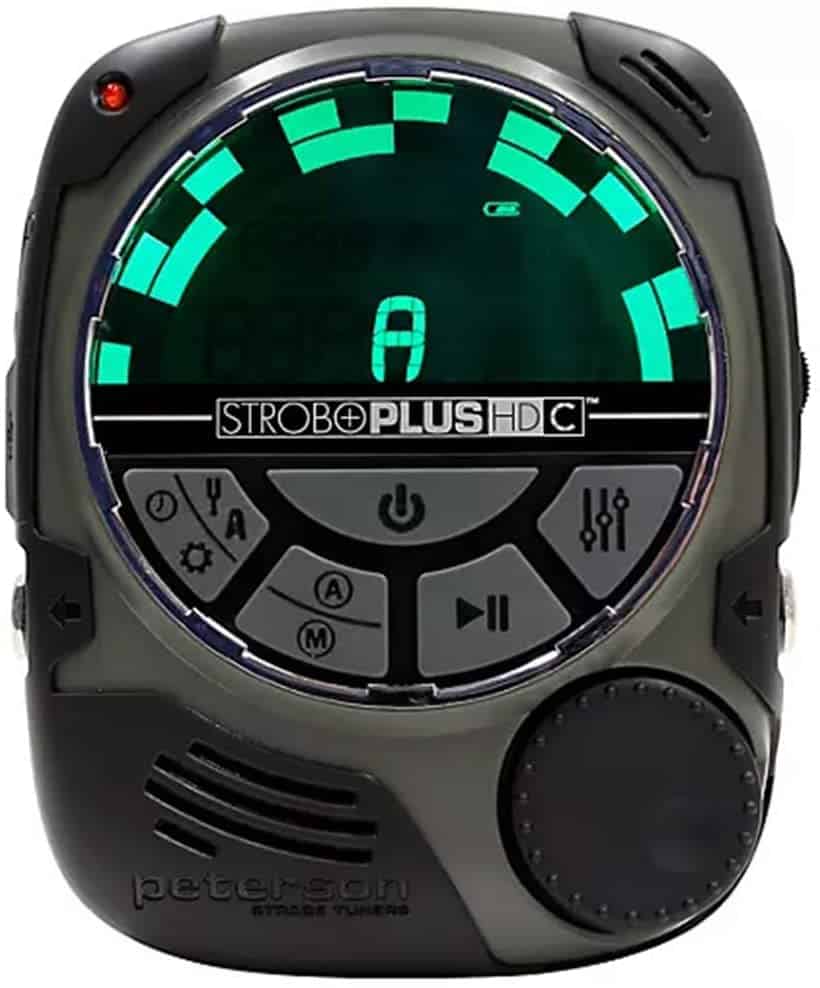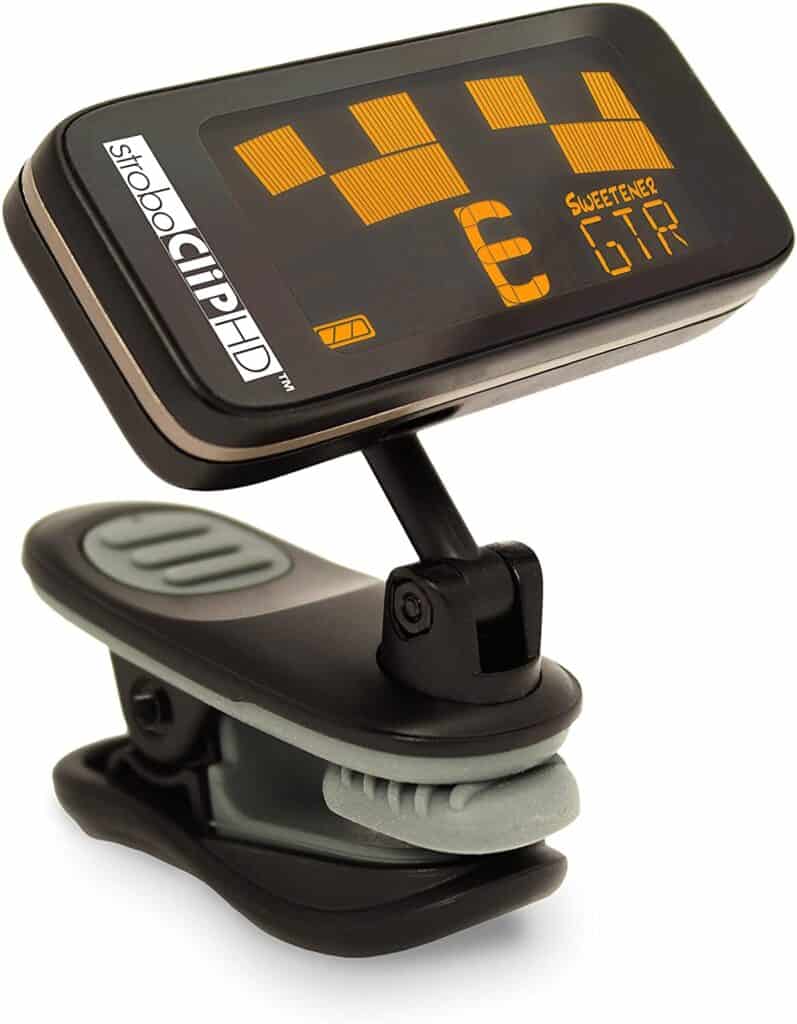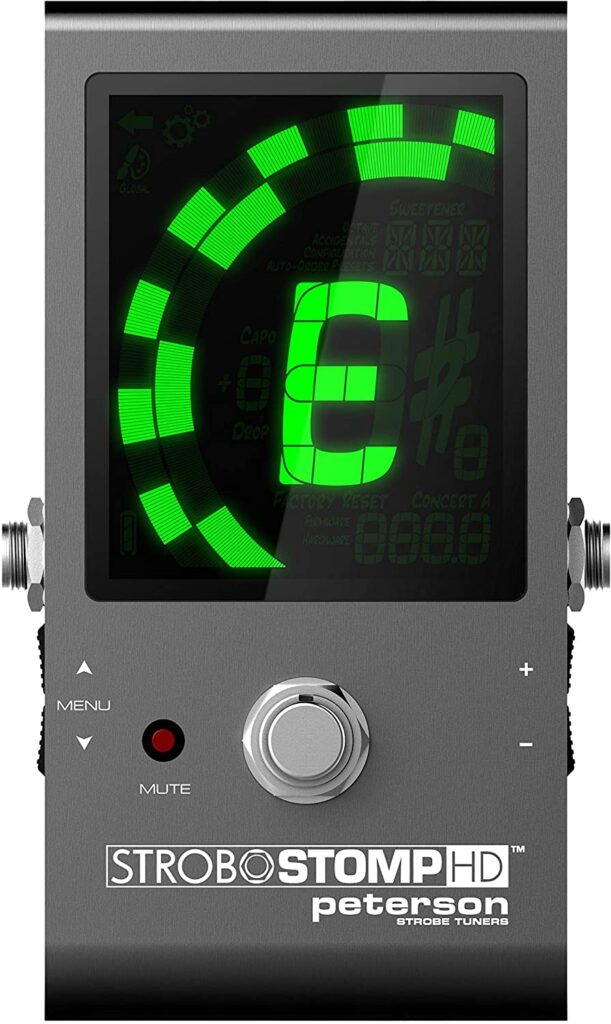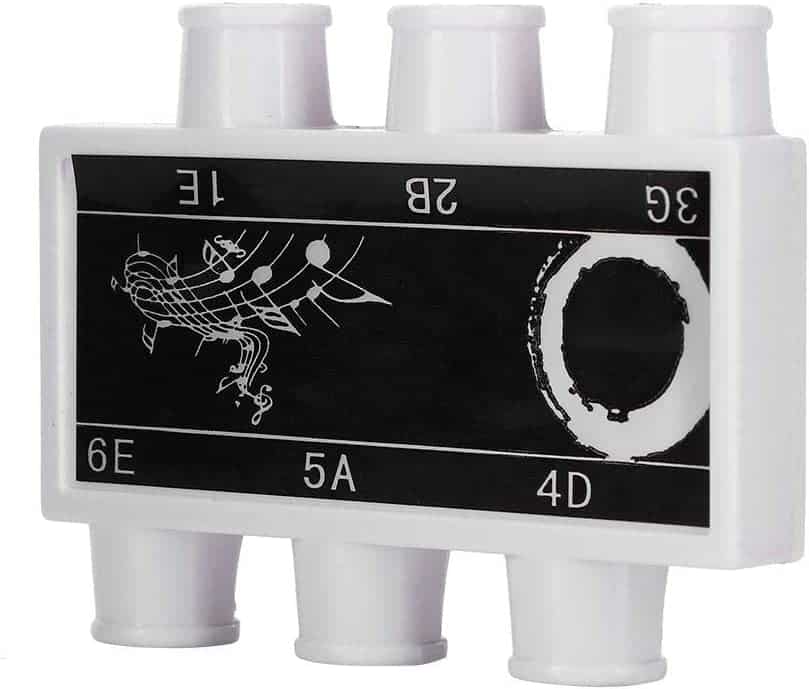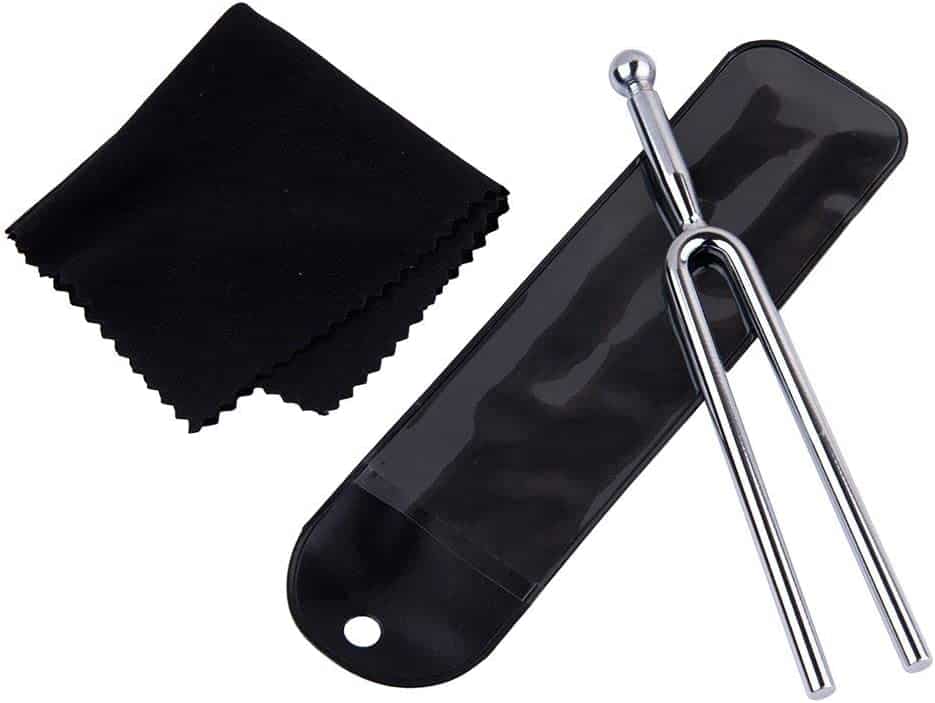When choosing a guitar tuner, we first need to think about what are we going to do with it. Well, tune the guitar, obviously, but what else? Are we going to use it live? If yes, we should make sure it’s a true bypass so it won’t affect the rest of the chain, and that it mutes the sound when on. Are we going to intonate the guitar with it? If yes, then it needs to be as accurate as possible. There are many different uses for a guitar tuner other than just for tuning.
We’ll do it by looking into 4 different aspects of them (which are also important to anything else you buy for your guitar): Looks, durability, usability, and price. But first, let’s go over the different types of guitar tuners.
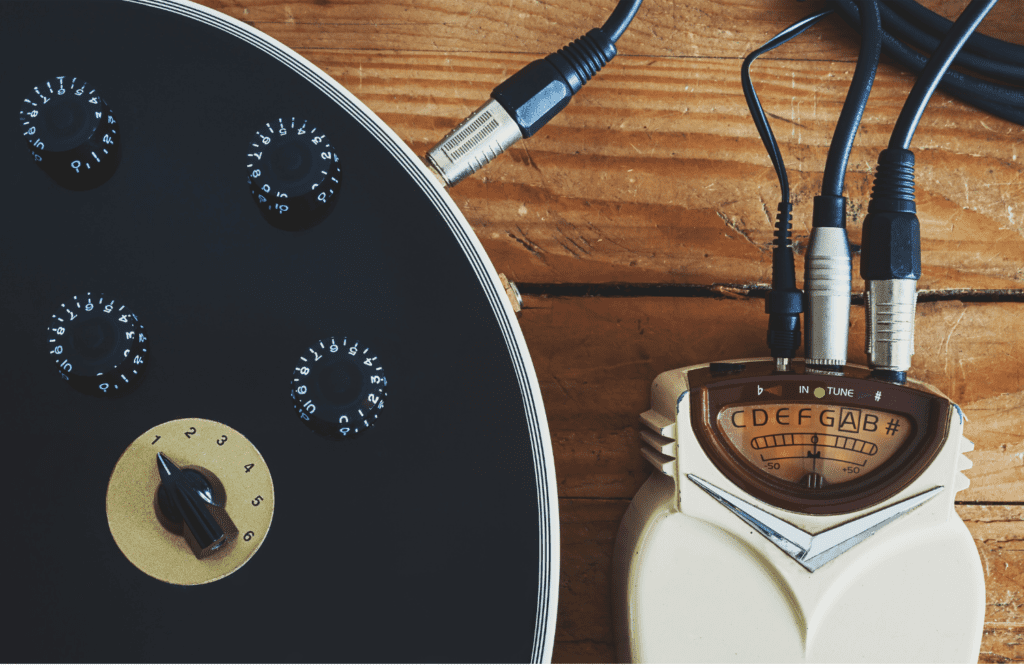
Table of Contents
Types of guitar tuners
There are a few different types of tuners each with its own list of pros and cons. When choosing a tuner, It’s important to think about the situation which we’ll use it for. For most players, a clip-on tuner will do. Once you start performing live, you’ll want a pedal. For recording, you can use a VST, and for setting up your guitar, you’ll want a strobe. Different types of tuners for different uses.
Clip-On Tuners
Invented in 1995, and became super popular in the mid-2000s. The clip-on tuner is extremely comfortable and cheap compared to other hardware tuners in the market (such as desktop tuners, pedal tuners, or rack tuners). A clip-on tuner sits on the headstock and measures the pitch using a contact mic that picks up the vibration from the wood.
An example of a good clip-on tuner is the KLIQ EcoTuner. Even though it’s not the cheapest, I love it because it’s both accurate and rechargeable.
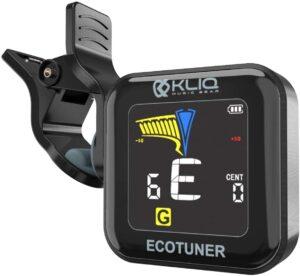
Desktop and Handheld Tuners
A desktop tuner picks up the pitch of a string using a mic. This means that the area needs to be relatively quiet for it to work properly. The level of accuracy really depends on the model. There are some extremely expensive high-end desktop tuners as well as cheap plastic ones.
Pedal Tuners
Pedal tuners are more accurate than the previous two because they are directly plugged into your guitar. Most pedal tuners serve another purpose other than just tuning, which is muting the guitar completely when they’re on. If you are interested in buying one, I’d suggest you get a real bypass one.
The BOSS TU-3 Chromatic Tuner is the industry standard pedal tuner for a long time now, and is my favorite too.
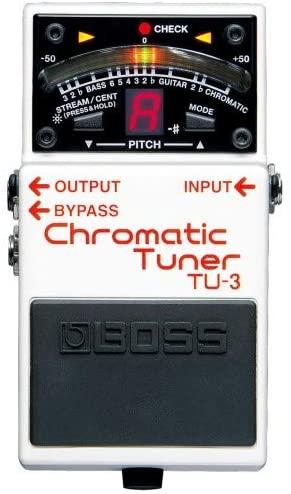
Tuner Apps
There are many many tuner apps in existence. They are using your phone’s microphone to detect the pitch, similarly to the way a desktop tuner work. There are some great free ones, but they often come with some limits. For example, in the free version of Guitar Tuna, only the standard tuning option is available.
Rack Tuners
Rack tuners may seem like an overkill, but they do have some benefits. Their high level of accuracy and huge display can make an actual difference to the experience of tuning a guitar. The tuner function is usually not even the main feature of these, as they are most likely multi-effects. I don’t feel like advising on which multi-effect you should buy because it depends a lot on what are you planning to do with it. I used to use a few of them a few years back when I was producing music in a studio, and they are a huge fun to mess around with.
Software or VST Plugin Tuners
If you are using a DAW (digital audio workstation) to record your guitar (whether acoustic or electric), you probably came across a few of these. They take the audio information from your signal and track its pitch. They are relatively accurate, and since they come built-in with your DAW, they are practically free.
Strobe Tuners
Strobe tuners are the most accurate tuners in the market and are used by guitar techs and studio recording engineers. They can come in many forms, as “strobe” describes the technology behind them. While most tuners are based on a microphone of some sort, strobe tuners use light frequencies to compare the frequency of a note played with the frequency of the target note. It is a bit of an oversimplification of the process, but I bet you got the point.
A great brand of strobe tuners is Peterson, haven’t found a product of theirs that I didn’t love so far.

Peterson StroboPlus HDC Chromatic Handled Strobe Tuner 

Peterson StroboStomp HD Strobe Tuner
Gadgety Guitar Tuners
Even though tuning your guitar is a relatively simple task, there are guitar gadgets that are made to make it even easier. An example for that is Roadie, an automatic smart tuner (that actually works). It has other features, too, which I cover here. Roadie is not alone in this line of products, but that’s the one I tried.

Other Types of Tuning Tools
In addition to these, there are other types of tuners, such as tuning forks and different types of whistles (Pitch Pipes). They are not really tuners, but tools that allow you to get a reliable note to tune your instrument. Traditionally, a tuning fork will play an A4 note when hit, which you can use to tune relative to. Pitch Pipes are tuned differently, and you can even find some for a guitar’s standard tuning. Some online tools and apps can also play an accurate pitch you can tune your guitar to.

Guitar Pitch Pipe 
Tuning Fork
Uses and Usability
As I stated earlier, there are a few different scenarios where you might need a guitar tuner. Each situation calls for a different type of tuner, based on their strengths and weaknesses.
When you practice at home, or when you’re just starting out, you really don’t need anything more than a simple clip-on tuner or a hand-held one. When you start performing live, you’ll want a pedal tuner. Both for its improved accuracy over a clip-on, but also for muting your rig when it’s on. No one needs to hear you tune your guitar. A pedal tuner can also be used for recording, but when recording at home, you’ll probably use a VST tuner. A professional studio will have a rack tuner, but they will use it to tune all sorts of cool instruments – not just guitars.
Many modern tuners tune down to a fraction of a note, and most of the tuners are very accurate. Rather than worry about whether the pedal will tune, pay special attention to how its interface works. It’s good to find a tuner that works for you, that you can easily read and won’t jump all over the place. Even if you’re considering buying a guitar tuner online, it’s a good idea to visit a guitar store first to try out different models and see what features you like.
Looks
You’ve got to consider the aesthetics of anything you’re bringing on stage with you, and this extends to tuner pedals. Does the pedal you’re considering look cool? More importantly, is it too large or too small to operate comfortably? Look at the mechanism that the guitar pedal uses for a stomp box. You may prefer a switch or pedal, but it’s worth considering how it’ll feel under your foot every night. After all, you’ll probably be stepping on your guitar tuner pedal more than any of your other effects.
Durability
Speaking of stepping on an effect pedal a lot, another thing to consider is how durable your pedal will be. Look for tuner pedals that are made from high-quality metal and springs, and that can take the rigors of the stage. The best way to look for pedal durability is to check user reviews on the Internet. A good tuner pedal will have users commenting about its durability in the comments. Remember, once you get your pedal, treat it a little bit carefully and it’ll last a lot longer.
Price
A big consideration for many guitarists is price. You can spend $10 of a clip-on tuner or get a free app and be just fine in some situations, while having to pay $300 and up if you’re an aspiring guitar tech wanting to set up guitars for other people. Even just pedal tuners range quite a bit in pricing, from $30 to over two hundred. Most guitarists will be completely satisfied with something around $80-90, and this is where the most popular pedals tend to be priced. Don’t underpay, or you’ll probably get a cheap unit that will break right away. On the same token, don’t pay too much for a tuner that you don’t need.
Finishing Thoughts
It’s important not to be overwhelmed by the many different types of guitar tuners. At the end of the day, all they do is help you tune your guitar – just a bit differently from each other. So how do you choose a guitar tuner? Just have your needs and budget in mind, there’s a product that suits you.
What are your favorite guitar tuners? Post in our comments section below.
